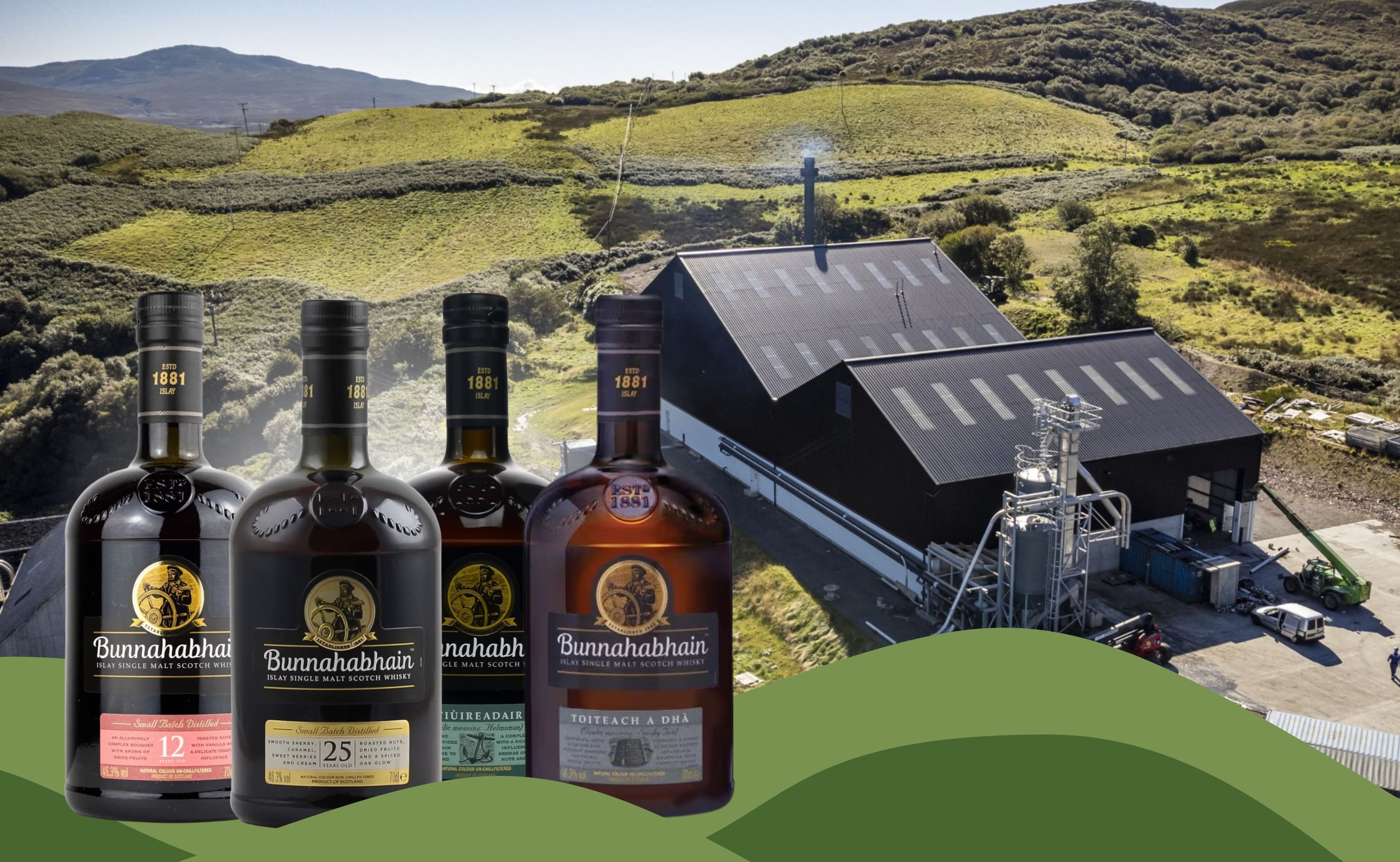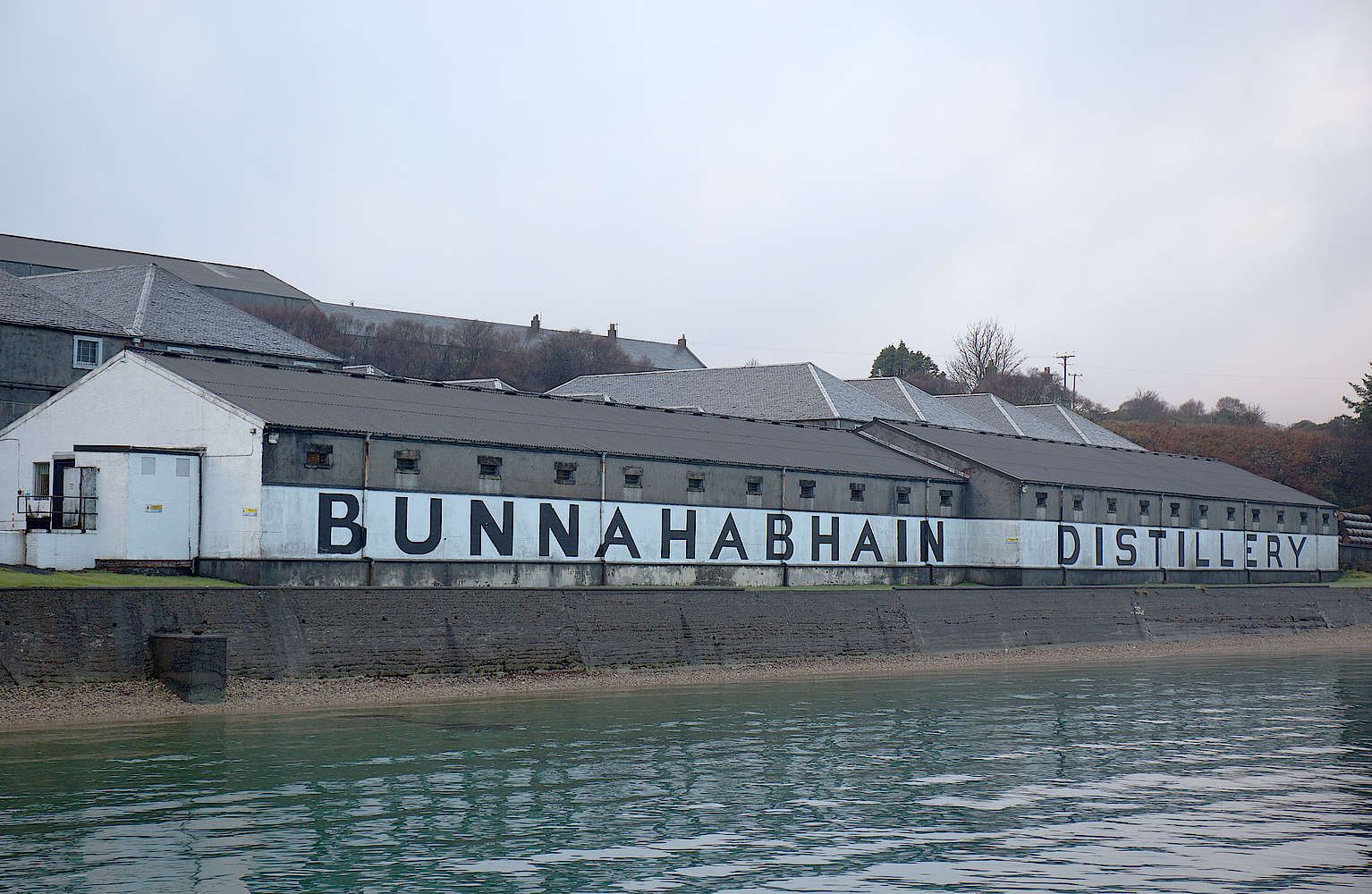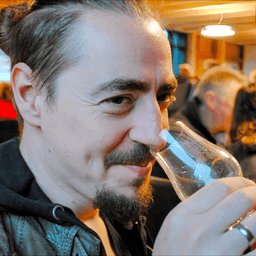08.07.2025
Bunnahabhain whisky hard to say, easy to love

Bunnahabhain whisky hard to say, easy to love
Bunnahäben, Bunnahafen or just Bunna, if you don't speak Gaelic, you've probably asked yourself - how do you pronounce it?
It's reassuring to know that even the local employees don't agree 100% on the name of their employer. The only fact is that Bunnahabhain comes from “Bun na h-Abhainne”, which means “mouth of the river”. This name was inspired by the underground river from which the distillery draws its spring water, the Margadale River.
Bunnahabhain was founded in 1881 by James Ford, William Robertson and James Greenlees, making it one of the youngest distilleries on the island of Islay. At the time, the distillery was so remote in the north-east of the island that until the 1960s it could only be reached by boat and a small village with its own school grew up around the distillery. The distillery's connection to seafaring is not only reflected in its logo - the saluting helmsman - but also in some of its bottlings such as the “Stiùireadair” (Gaelic for ‘helmsman’), which is also a reference to the song “Westering Home” that is very popular on Islay.
The remoteness of the distillery and the somewhat unreliable supply chain at the time is also one of the reasons why everything at Bunnahabhain is somewhat larger on site:
-
On-site storage capacity approx. 14,600 barrels
-
Wash still capacity 35,386 liters
-
Spirit still capacity 15,546 liters
-
6 “Oregon Pine” washbacks with a capacity of 100,000 liters each
There is still a ship landing stage on site today, but apart from the occasional visit from people, nothing has come here by ship for a long time. After a (single-lane) road was built to the distillery in the 1960s, deliveries were gradually switched to trucks for reasons of cost and efficiency, before deliveries by ship were discontinued completely in the 1990s.

Bunnahabhain does many things differently and that is a good thing. Because all the little special features naturally also contribute to the unique character and unmistakable taste of their whiskies.
-
Today, Bunnahabhain mainly produces unpeated whiskies that mature in ex-bourbon and ex-sherry casks. There is currently only one peated whisky in Bunnahabhain's “Core Range” - the “Toiteach a dha” (Gaelic - “smoky the second”)
-
Bunnahabhain is the only distillery on Islay that draws its water from a river source, the aforementioned Margadale River.
-
Bunnahabhain is very committed to sustainability and has been the only distillery on Islay with its own biomass plant since 2022. The plant generates clean electricity and heat for the distillery's operations and also promotes the island's biodiversity.
-
The distillery has the highest stills on the island, which also contributes significantly to the unique taste of its whisky.
Current core range of the distillery
- Bunnahabhain 12 years 46.3%
- Bunnahabhain 18 years 46.3%
- Bunnahabhain 25 years 46.3%
- Bunnahabhain 30 years 46.3%
- Bunnahabhain 40 years 41.9%
- Bunnahabhain Stiuireadair 46.3%
- Bunnahabhain Toiteach A Dhà 46.3%
A “fun fact” at the end - the distillery used to be spelled with four “n ”s - (Bunnahabhainn). However, the Royal Ordnance Survey, which is responsible for land surveying in the United Kingdom, made a mistake here and forgot the last “n”. However, the authority subsequently refused to correct its mistake and so the name we know today has been adapted.
Conclusion:
Bunnahabhain is in many ways a special distillery with a rich history and a unique whisky. The Bunnahabhain whiskies are “easy to love” due to their mild but complex character and are very popular and highly regarded by beginners and connoisseurs alike.
About the author

Andreas Schwarz
My name is Andreas Schwarz, since a trip to Ireland in 2017 and a visit to Tullamore DEW, I have been fascinated by the water of life and (like many others) have gradually gotten into the subject.
To the author